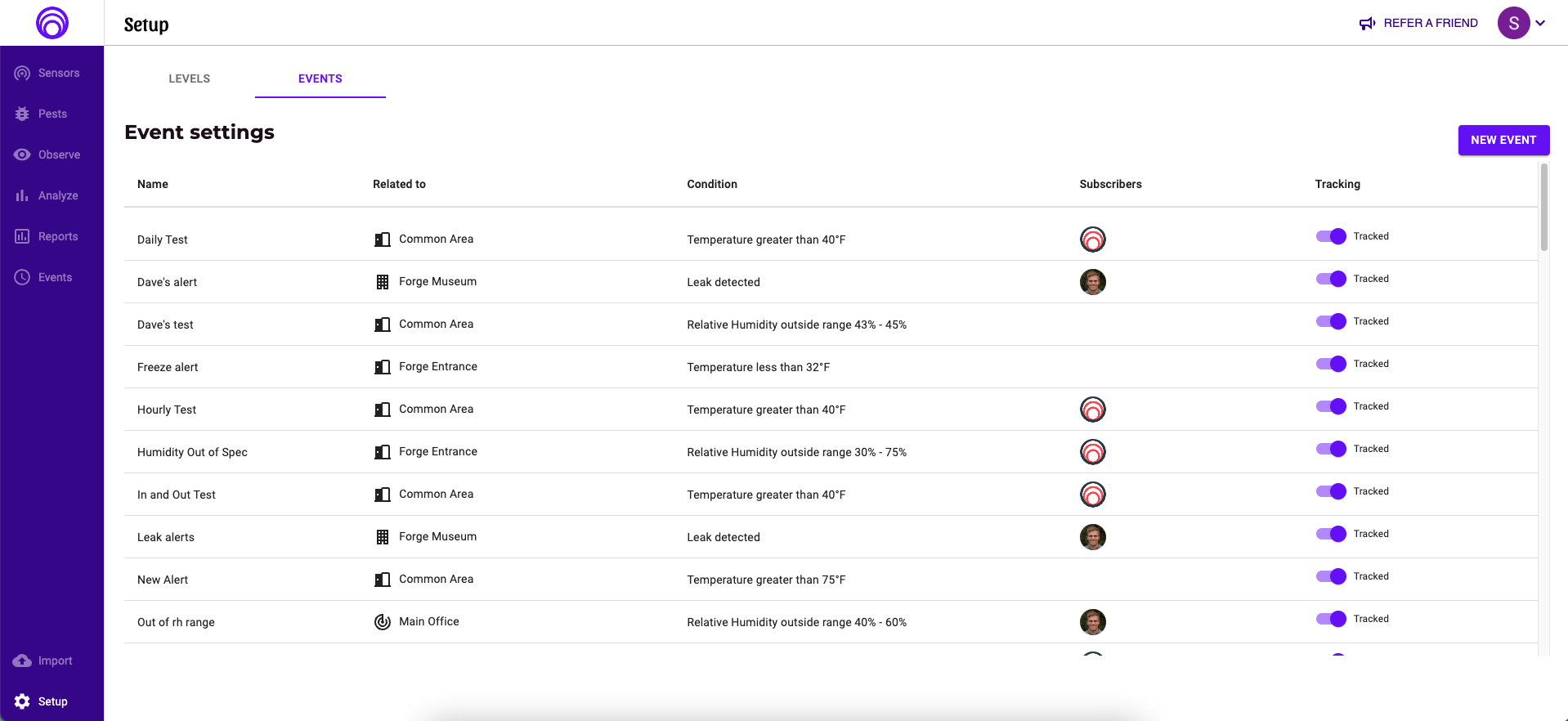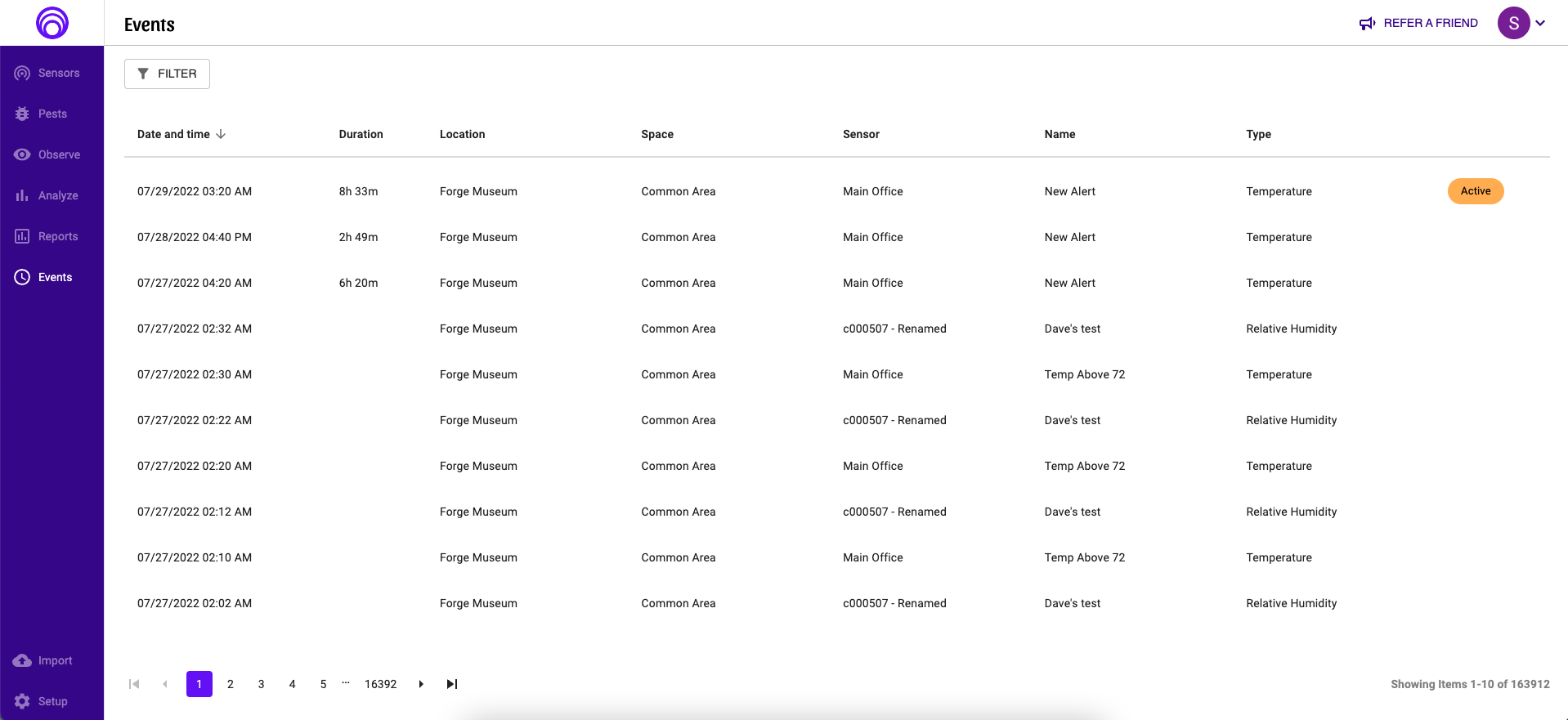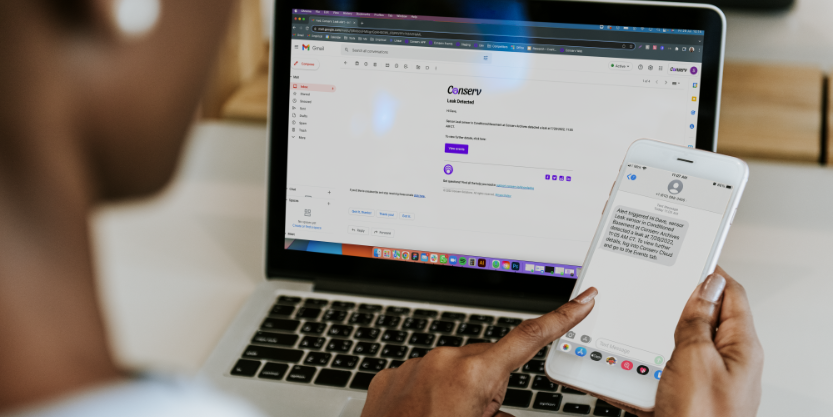An effective environmental monitoring program is about more than measuring the environment. There are many challenges that need to be overcome to properly protect a collection:
- Staff may not be available for full-time monitoring
- Storage locations may be many and far apart
- Facilities teams and conservation teams may not have regular communications
- Collections staff may not have access to the environmental regulation systems
- Old buildings may be prone to mechanical and structural problems that will affect indoor environments
- It is difficult to show consistent evidence of problems affecting environmental conditions over time to enact change.
For these reasons, sensors need to be able to give you the data you need when you need it and not weeks later when it’s too late to take timely action. Passive data collection is not enough – monitoring needs to be proactive.
Conserv’s sensors provide real-time updates on your environment and our customizable alerts give you the proactive monitoring you need to take that action quickly. To illustrate the benefits of this kind of real-time environmental monitoring system, we collated stories from four Conserv customers using our Events and Alerts functionality to overcome past issues and improve the environmental conditions of their spaces.
These stories contain challenges that likely sound familiar, and you may have experienced similar challenges at your institution. Common to each story is how each customer used the data they were gathering to drive positive change for their collections and tackle these challenges head-on.
“By the time we got there…”
Often our customers talk about events in the past where something went wrong in their collections spaces, and they did not find out about it for a long time – sometimes a very long time. Has this ever happened to you?
Steamy situations
The majority of Utah State University Eastern Prehistoric Museum’s collection is stored offsite on the main university campus. A steam leak in October 2020 spurred them to invest in Conserv’s real-time monitoring:
“By the time we got over there, the humidity had gone up to about 70%, which is unheard of around here. We needed some way to monitor what was happening, because we can’t be there all the time – even during opening hours, much less in the middle of the night and on the weekends.”
Katy Corneli, Utah State University Eastern Prehistoric Museum
Similarly, Jon Woodward shares a past experience with old sensors at the Harvard Museum of Comparative Zoology:
“With the sensors I used to have, I would go around and read those out once every month and then I would look at the data. At the end of the month, I’d look over the previous data and there was one occasion, years ago now… but at some point in the month, this one collection room just had this huge 10° temperature spike out of nowhere. The department didn’t go in there very often and didn’t notice that the temperature was off, so it had just been sitting there. I think they ultimately diagnosed it as some sort of glitch in the steam heat system upstream of where that room is, but it took 20 days for somebody to notice it because I didn’t have something sending me an email saying, ‘hey, something is wrong in this room.’”
Peace of mind
One of the benefits to the Events & Alerts functionality that many of our users have expressed has to do with peace of mind. If you don’t get any alerts, you know all is well. And if you do get some alerts, now you know and can do something about it immediately. Reflecting back on the steam leak in 2020, Katy said:
“[The alerts] put my mind at ease so that I know if there’s another steam leak we’ll know about it pretty fast. It felt like a tropical forest in that collections area. We would have known about it way before it reached that point.”
Like Katy, Dara Lohnes-Davies at the University of Wyoming Art Museum sees value in having alerts set up, even when things are going well:
“Thankfully we haven’t had a real emergency while having Conserv sensors installed, but it gives me peace of mind knowing I will know right away if something happens.”
Meanwhile, Christine Manwiller from the Museum of the Bible shares how the Conserv alerts are complementing the general system, which does not itself have inbuilt alerts:
“They [facilities] didn’t have any alerts in their system, or it was more difficult for them to set up alerts, so… for me to have the alerts, and then because of the unlimited users, I was able to actually add some of the facilities team to alerts a few months ago so now they get them too.”

The Events settings tab in Conserv Cloud will allow various team members to subscribe and let you turn different real-time alerts on and off based on your needs.
Understanding your building and its users
One of the added benefits of a tracked history of events and associated real-time alerts is that over time, they will give you insights into your buildings, its weak spots and even some user behavior. Real-time data and alerting can give you the agency you require to protect your collections at the right times, even if you don’t have sophisticated systems for controlling your environment, and can enable much cheaper ways of responding to environmental conditions.
At the Utah State University Eastern Prehistoric Museum, Katy now uses Conserv’s alerts to adjust her collection environment to changing conditions, despite having limited control over the facility itself:
“The winter gets very dry here and we have no control over our HVAC system. I started getting alerts that there was low humidity in the archives room. It meant that I could go over there and literally put a bucket of water in the middle of the room and raise the humidity up just enough.
Recently we’ve been having monsoons throughout the state and I’ve been getting a lot of alerts about that same room telling me that the humidity is higher than 40%, which is very high around here… It means that I can try to get over there more often during the week, and prop the door open and air it out a little bit.”
Similarly, Dara Lohnes-Davies at the University of Wyoming Art Museum is using the full range of capabilities of her Conserv sensor to make preventive conservation possible at the museum. In her case, she uses alerts for light monitoring to confirm the museum’s spaces are being used appropriately:
“The biggest benefit to real time light level alerts is that it allows me to verify activities in specific spaces, such as students coming in to work on assigned projects, and which storage spaces our museum staff goes into when conducting tours.”
Dara also uses temperature and relative humidity alerts to help gain an understanding of how her spaces interact with the environment:
“Real time alerts about temperature and humidity have made it so much easier to build our understanding of how our building interacts with the exterior environment.”
Data for decision-making
Jon Woodward, at the Harvard Museum of Comparative Zoology, explains how alerts keep the team connected to the data they are gathering. The information being provided by their sensors is no longer disconnected from decision-making. Instead, it is allowing them to identify and improve their spaces:
“We had access to the data before but having it bounced off of us every day with a bunch of emails brought it to the forefront and is providing useful information and data to bring to the building operations people… that we can use to address the underlying causes… so we’re actually addressing the root causes, which is great. I think that’s been the biggest benefit for us so far.”
Building new opportunities
The Events & Alerts functionality isn’t just about letting you know when things go wrong so you can take quick action. The historical data you build over time will help you make the case for investment in the storage space itself:
“We’re hoping to use that information in the future for writing grants for better storage facilities, better storage equipment, things like that.”
Katy Corneli, Utah State University Eastern Prehistoric Museum

A list of current and past events will allow you to identify recurring problems and make decisions based on hard evidence. Real-time environmental monitoring means that any active events will be highlighted until the situation is resolved. You will also know how long the event was active for.
Conserv features working for you
We recently updated and relaunched our Events & Alerts functionality to make it even easier to realize the benefits of real-time monitoring described by Katy, Dara, Christine, and Jon’s stories. The updated functionality allows you to create and track events for relative humidity, temperature, illuminance, movement (using our Conserv sensor), and leaks (using our leak detection sensor), and subscribe to receive alerts by email and text message. It also allows you to subscribe as many users as you need to receive alerts so that all the key members of your teams may be informed of important issues. Additionally, it will create a history of past events which you may then use to apply for grants to improve your spaces.
If you are already a Conserv sensor user, we hope you enjoy our latest iteration of the Events & Alerts functionality. Please let us know if you have thoughts or suggestions to improve this functionality. We are always looking for feedback to make sure all our features help you do your job.
If you need more information on how to set up the functionality, you can watch the tutorial when you log into the account or find more instructions in our Knowledge Base article.
If you don’t have any Conserv sensors but are interested in learning more about them, reach out to one of our Conservation Liaisons to find the best fit for you.
If you have never used Conserv Cloud, you’re welcome to get a free account! We don’t have limits for users and are happy for you to use the software with your own manual sensors. Sign up for a demo to get your free account.
Acknowledgments
We would like to thank Katy Corneli from the Utah State University Eastern Prehistoric Museum, Dara Lohnes-Davies at the University of Wyoming Art Museum, Christine Manwiller from the Museum of the Bible, and Jon Woodward from the Harvard Museum of Comparative Zoology for sharing their experiences.
If you have any questions about environmental monitoring, integrated pest management, or just want to talk about preventative conservation, please reach out to us! Don’t forget to check out our blog or join our community of collections care professionals where you can discuss hot topics, connect with other conservators or even take a course to get familiar with the Conserv platform.




